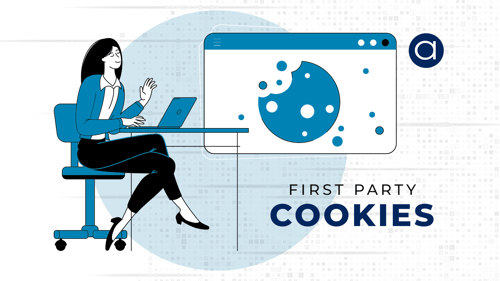
Blog

Measuring Your Marketing Campaigns: What is ROMI?
Retail and marketing pioneer John Wanamaker may not be a household name today, but he was the type of larger-than-life character that the United States seemed to produce in droves in the 19th century.
Among the things credited to Wannamaker’s ledger – which, moneywise, was a robust $100+ million at the time of his death in 1922:
- Opening the first department store in Philadelphia
- Creating the price tag as we know it
- Starting the business practice of “money-back guarantee”
- Introducing the first commemorative stamp as U.S. Postmaster General
- He financed the campaign to make Mother’s Day a U.S. holiday
- First retailer to place half-page and then full-page ads in newspapers
- Hiring the world’s first full-time copywriter
That copywriter, John Emory Powers, is considered by many to be the father of modern creative advertising. He wrote six ads a week for nine months before homing in on a style that drove business to the Wannamaker’s department store.
Powers estimated only 1 out of 6 of his early efforts were successful, that ratio reached at least 50-50 according to one of Wanamaker’s most famous quotes, one I’m sure you have seen before:
“Half my advertising spend is wasted; the trouble is, I don’t know which half.”
Wanamaker’s Bon Mot Holds Water a Century Later
While Wanamaker passed away even before radio became popular in American households, his business bon mot held true into the internet age.
In fact, Rex Briggs and Greg Stuart in their 2006 “What Sticks: Why Most Advertising Fails and How to Guarantee Yours Succeeds” discovered that the average marketing spend had a 37 percent effectiveness rate.
“If marketers said “63 percent of my advertising spend is wasted,” this would not have quite the same ring as John Wanamaker’s 50 percent phrase, but it would be more accurate,” wrote Darren Woolley in 2019 on MediaVillage Though Leaders. “Briggs and Stuart figured out why nearly two-thirds of marketing expenditures were wasted, concluding that the waste came from a poor understanding of consumer motivations, coupled with inaccurate messaging delivered with an inappropriate media mix. Bingo. Target missed.”
The bottom line is that from brick-and-mortar establishments to digital only enterprises, businesses still did not understand what their return on marketing investment (ROMI) was.
Fortunately, the power of computing and advances in data analytics has opened the way for businesses to finally understand their true ROMI.
“In the good old days, half of your marketing money [was] wasted without full certainty of which half is which. Nowadays we can get much closer to the truth – what is the exact ROMI,” says Sellforte’s Tuomas Matilainen. “Modernization has paved the way for professional insights that continuously innovate our conventional means toward success.”
Wanamaker, who saw his revenue double after Powers understood what advertising resonated with the consumer, would be all in on utilizing ROMI in 2022.
And he’s not alone, Google the phrase “half my advertising is wasted” today and you get more than 20 million results!
“R” You Ready? The Difference Between ROMI, ROI, ROMO and ROAS
Next to the bureaucrats, perhaps nobody loves acronyms more than marketers, so we need to define the difference between ROMI. ROI, ROMO and ROAS:
- ROI: Return on Investment
- ROMI: Return on Marketing Investment
- ROMO: Return on Marketing Opportunity
- ROAS: Return on Ad Spend
“ROMI is the amount of profit that you can directly attribute to your marketing, while considering the cost of that marketing,” says digital marketing expert John Lincoln. “It’s the type of metric that tells you [about] the return on your investment but ROMI is unique in that it focuses solely on marketing investments rather than sweeping investments.”
ROMI, according to TechTarget, is a subset of ROI.
“ROI could be about any investment in your company. ROMI on the other hand has to do with marketing specifically,” explains Lincoln.
ROMO, says TechTarget, is a similar metric used by digital marketers that focuses on the wider influence of a campaign.
“Both terms (ROMI and ROMO) are part of a wider attempt in the industry to measure impact-based advertising,” says TechTarget.
ROAS, on the other hand, is a metric that divides your marketing income by your marketing expenses, and has been usurped by the increasing popularity of ROMI.
“ROMI is different because it deducts your cost of goods in advertising expenses,” says Lincoln. “This gives you a more streamlined take on what’s really propelling the brand reputation and the revenue.”
How Can You Calculate ROMI?
So, what does the ROMI formula look like and how is it calculated?
“In the simplest sense, ROMI is measured by comparing revenue gains against marketing investment,” says TechTarget. “This calculation, however, reflects only the direct impact of marketing investment on a business's revenue. As a result, many digital marketers include dwell time or brand awareness in their ROMI metrics in an effort to quantify less tangible benefits and target future campaigns more effectively.”
Lincoln lays out the ROMI formula like this:
- Incremental revenue for marketing in dollars minus the cost of goods in dollars minus the marketing spend in dollars divided by the marketing spend in dollars will equal your ROMI.
“So really you are looking at the revenue you are getting from marketing minus the cost of goods minus the marketing spend and you are dividing that by the marketing spend,” explains Lincoln in his YouTube video.
Here is an example of how ROMI is calculated:
- Your business has $50,000 gain in revenue from marketing
- You subtract costs of $7,000 in goods sold from that total
- You subtract costs of $10,500 in marketing spend from that total
- That leaves you $32,500 which you divide by the same marketing spend ($10,500)
- That result is 3.095 which is your ROMI. This can be expressed as 309.50 percent by multiplying by 100.
Is 3.095 a good ROMI? Matilainen argues that it will all depend on many factors including:
- The KPI you’re modelling
- Your target audience
- Your industry and business
- Your marketing budget and goals
“However, as a rule of thumb, we can say that it’s better to gain more than you lose, meaning that margin ROI should be above 1. Anything below that is straight up burning cash,” writes Matilainen.
The Importance of ROMI
A lot of marketers do not like to get bogged down in the numbers but want to focus on the creative aspects of the business.
Understanding ROMI, however, is key to success.
“If you cannot prove the value of your work with “hard data”, you cannot expect to get the respect, trust and marketing budget you deserve,” says Matilainen.
Lincoln says that ROMI can contribute to both your short-term and long-term marketing plans:
- Short-term ROMI: Determines your revenue for every dollar of marketing investments. It can help you direct your marketing efforts moving forward based on how lucrative (or not!) they are. This is all based on solid numbers and not gut instinct.
- Long-term ROMI: Can help you understand marketing efforts like brand awareness and consumer intent. It addresses the long term value of your marketing efforts as well as the incremental revenue that is crucial to your survival.
“The bottom line is ROMI is the best way to get a clear idea of your return on marketing investment,” says Lincoln. “Once you know your ROMI, you have a good idea of whether you’re in the red or the green in terms of marketing investments, but you can also determine how much you’ve earned based on the risk capital with the results of your calculation in hand, you can determine pivots in trajectory for your marketing strategy moving into the upcoming quarters.”
ROMI in Action: “This Data is Gold”
The importance of ROMI can be seen in a 2018 data study by Outsell, with partners RXA and Vistadash, that focused on ROMI for U.S. auto dealerships.
This study spanned 300 dealerships and looked at data on 420,000 customers, 3.5 million customer interactions, and $72 million in media spend and ultimately found that half of the dealers were overspending on at least one marketing channel – meaning they had invested to or past the point of diminishing returns.
In addition to finding that half of dealers were overspending, the study found:
- Dealership size has an impact on ROMI, with smaller dealers seeing solid returns from paid media and referrals whereas larger dealers have the scale to see better performance from display and email.
- When it comes to conquest marketing, dealers need to go big or go home – if you can’t do it at scale, you shouldn’t do it at all as you’ll never achieve positive ROMI.
- About half of dealers are underspending on social media marketing.
- One out of every three dealers is overspending on Search-Engine Marketing (SEM). Most of that overspend is in branded search – paying for clicks for your dealership name. While this tactic works well for smaller dealers, it’s unnecessary for large stores who are already well known and get good results from organic search.
- While dealers have often believed they need to spend more on marketing in a large market, the study found that market size does not impact ROMI.
- Often, dealers could optimize their investments simply by shifting budgets around – they don’t necessarily need to invest more.
“As John Wanamaker famously said, ‘Half the money I spend on advertising is wasted; the trouble is, I don’t know which half,’” said Mike Wethington, Founder and CEO of Outsell. “We set out to try to measure that, to set benchmarks for the industry and eventually to help any dealer calculate their own marketing ROI. The methodology we developed for this study could be applied at the dealer level to help them better understand how they can shift their marketing budget around for better returns.”
One dealer summed up the value of the data generated from the ROMI study: “This data is gold for an auto marketer. We were able to see where our marketing dollars are going the furthest, and where we need to reconsider investments. By re-allocating a portion of our existing spend – and not even adding any spend – we were able to generate a 17 percent increase in gross profit.”
Now that’s a gross profit that would get the seal of approval from even John Wanamaker!
Subscribe to email updates
Recent posts

Related Articles

Topics

Topics

Topics






